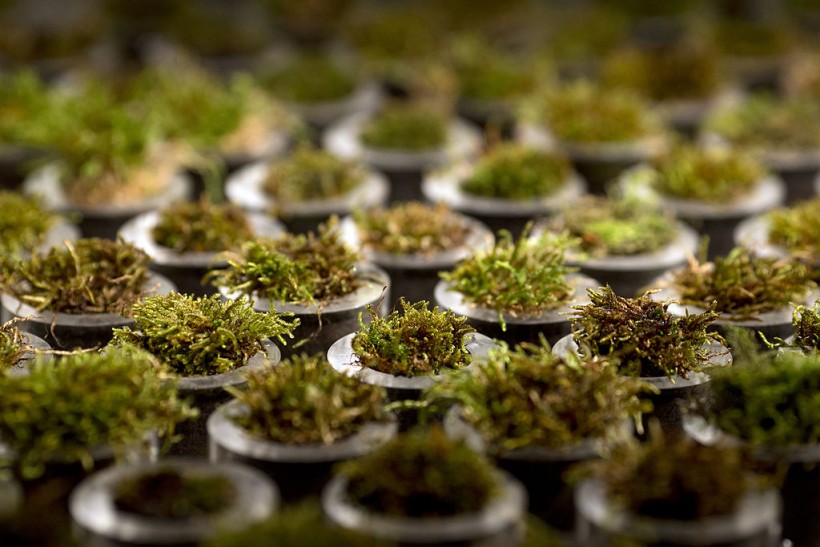A team of researchers at the University of California, Riverside, and the University of Delaware made an artificial way of photosynthesis to grow plants.

(Photo : JOEL SAGET/AFP via Getty Images)
Photo shows a "moss table", which demonstrates the potential of biophotovoltaic technology, producing renewable energy from the photosynthesis of living organisms, on view at the exhibition "En Vie, aux frontieres du design" at the EDF Foundation in Paris on April 25, 2013.
The method uses a carbon dioxide electrolyzer. It's a device that uses electricity to convert carbon dioxide into acetate. Once that is produced, it will be diluted and placed into glass vials where individual plants were growing hydroponically.
The method was used on nine plants such as tomatoes, rice, lettuce, green pea, and jalapeño peppers.
The results were amazing as the plants were able to grow in the dark via the electrolyzer. It also has shown that the algae grown through the method was more energy-efficient compared to the solar photosynthesis method.
Solar Method is Still There
Don't get it wrong, though. This new method doesn't completely cut out solar. The electrolyzer uses solar panels to achieve the electricity needed to produce the acetate.
Still, this is an innovative approach to growing plants without direct sunlight. With this, it can provide a more efficient solution to the growing global food insecurity. This will also enable the viability of indoor farming facilities that will keep a lot of people fed.
The Carbon Dioxide Electrolyzer
The electrolyzer uses a chemical process to produce acetate, carbon monoxide, and hydrogen gas. These are all produced during the electrolysis of water. The process involves electrolyzing water to produce acetate, carbon monoxide, and hydrogen gas.
Now, here's the tricky part. All the three gases produced will be used to produce photosynthesis. Carbon monoxide and hydrogen gas will go first to the acetate. This will undergo photosynthesis to become glucose and oxygen.
Then, glucose will be used for photosynthesis. Photosynthesis occurs as the plants will use water and glucose to create carbohydrates. The electrolyzer is used as a method to provide plants with carbon dioxide that is needed for photosynthesis. The chemical process of electrolysis is used by the plants to grow.
The Answer to Global Food Insecurity?
In the past, scientists and farmers alike have proven that indoor farming is possible. But it's not very efficient.
They use electricity to light up the plants and the solar panel to provide electric energy to the crops. Using this method is like connecting a digital camera to a camera battery. It just doesn't work.
This new method converts the sun's light into chemical energy, which then transforms into a source of food energy for the plants. This is an innovative way of producing food. Not only will it save energy, but the method will also save time and money.
With this, it will be a major help in fighting food insecurity. In the past years, there have been reports of food shortages that are caused by climate change. This can provide a more effective way to have a constant supply of food for the people. It will be a food revolution as we know it.
As for now, the method has been successful in producing plants for research purposes. The researchers are still trying to determine if the method can be effective in growing crops for food.
Related Article: Artificial Photosynthesis Holds Promise Of Cleaner, Greener Environment
This article is owned by TechTimes
Written by April Fowell








